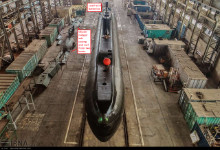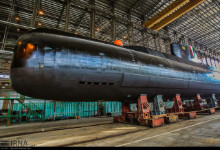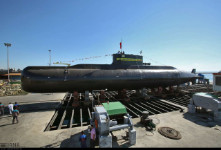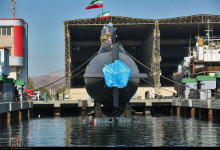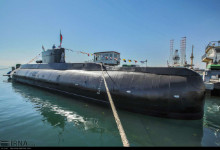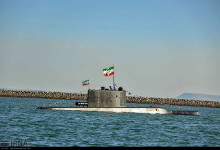Updated. Originally posted 8th Dec 2016
![]()

![]()

Iranian Navy's Fateh Class Submarine explained
 The Fateh (Conqueror) Class submarine marks a coming of age Iran’s submarine building program. It is a moderately capable coastal submarine roughly the same size as the Type-206 class. More importantly it clears the way for Iran to build larger submarines. It's technology and capabilities are therefore an indication of what might be around the corner.
The Fateh (Conqueror) Class submarine marks a coming of age Iran’s submarine building program. It is a moderately capable coastal submarine roughly the same size as the Type-206 class. More importantly it clears the way for Iran to build larger submarines. It's technology and capabilities are therefore an indication of what might be around the corner.
Original artwork based on photo analysis - CLICK IMAGE FOR HIGH-RESOLUTION:
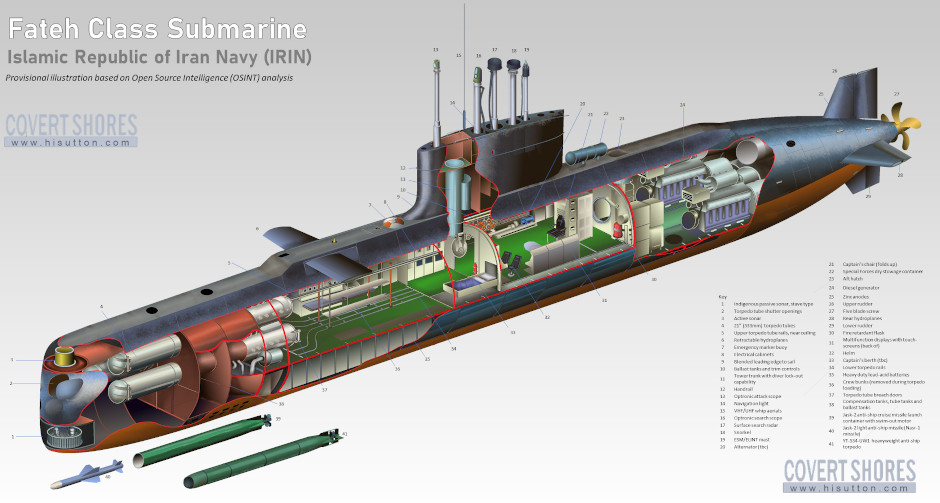
The backbone of the Iranian Navy's (IRIN) submarine force is the Russian supplied Pr.877 KILO Class. Three of these 3,000 ton (submerged) subs are have been in service since the early 1990s. Iran has strived for self-sufficiency however. It started in the 1980s with crude midget submarines. Iran's indigenous submarine program then progressed through several midget submarines, culminating in the Nahang Class. There has been significant external influence along the way, notably from North Korea. The hermit kingdom supplied MS-29 Yono Class midget submarines in the early 2000s. The design was put into local production as the IS-120 Ghadir Class. And there has also been some liaison with Russian and Chinese organizations. Ultimately however the Fateh is a legitimate indigenous product. Iran deserves some credit in this regard.
The 157ft (48 m) long boat is much larger than the Ghadir. But in design terms it is really an enlarged Ghadir rather than a scaled down Kilo. The overall layout and hull technology is similar but scaled up to have four torpedo tubes and twin diesel generators.
Photographs by Mohammad Aqa
IRIS-Fateh was launched in September 2013 with the hull number 961, and subsequently refitted following sea trials before being commissioned into the Iranian Navy on 17th February 2019 with the hull number 920.
Increased punch
The main capability increase over the Ghadir is the doubling of the torpedo tubes. As well as doubling the potential firepower against a high value target, like an aircraft carrier, it allows the engagement of multiple targets. Or, a self-defense capability following an initial attack. This may make some adversaries think twice about chasing it down after an attack. Whereas the Ghadirs would be essentially defenseless.
It is unclear whether any reloads can be carried. There are rails in the 'torpedo room' but space is very cramped. It appears that reloading is done via the upper tubes in a similar way to the Ghadir. This means that the torpedoes are floated in while the submarine is at rest on an even keel. This is mechanically simple but is the least desirable way of loading. To load the lower tubes, which are always below the water line, the rounds must be brought in through the upper tubes. This likely explains the torpedo rails in the torpedo room regardless of reloads.
The main armament is likely to be the locally produced YT-534-UW1 'Valfajr' heavyweight anti-ship torpedo, which is an improved version of the North Korean PT-97W /YT-534-W1.
1. 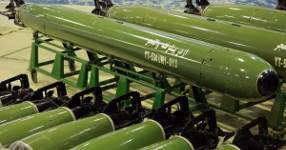 2.
2.  3.
3. 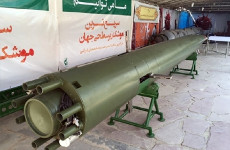
- YT-534-UW1 torpedo. 2. Iranian submarine launched anti-ship missile (TBC). 3. Hoot.
Fateh can probably be equipped with the indiginous Jask-2 submarine-launched anti-ship missile which is was reportedly tested at Velayat-97 war games (from a Ghdair), and the Zulfiqar-99 war games. The Jask-2 is based on the small Nasr-1 missile, although there are Iranian reports that the range has been increased. At any rate in practice submarine launched anti-ship missiles are relatively short ranged unless they have off-board targeting. This is unlikely in this case, both tactically and technologically. The engagement range of the missile would be approximately 15-25 nautical miles depending on target size, limited by the height of the submarine's radar mast. The warhead is very small.
If the Iranian copy of the Russian VA-111 Shkval supercaviating rocket-torpedo, known as Hoot in Iran, enters production, then Fateh is an obvious platform. Although impressive engineering, the Shkval would be of limited use tactically. The example Iran has shown was wire guided.
A range of mines can likely be carried. These are referenced in Iranian media reports but no hard evidence has been seen in public sources.
The World's ONLY Guide to
Narco Submarines
10 years of research, analyzing over 160 incidents, condensed into a handy guide. This unique book systematically breaks down the types and families. With detailed taxonomy, recognition 3-views, profiles and photos. Available on Amazon
Original artwork based on photo analysis - CLICK IMAGE FOR HIGH-RESOLUTION:

Specification
Displacememt: 527 tons surfaced, around 600 tons submerged
Length: 48 m
Hull diameter: 4.4 m
Speed: 11 kt surfaced, 14 kt submerged
Operating Depth: 200 m
Test Depth: 250 m
Endurance: 35 days reported
Powerplant: diesel-electric
Armament: 4 x 533mm (21") torpedo tubes. Possibly up to two reloads (Tbc)
The ultimate book of Special Forces subs Covert Shores 2nd Edition is the ONLY world history of naval Special Forces, their missions and their specialist vehicles. SEALs, SBS, COMSUBIN, Sh-13, Spetsnaz, Kampfschwimmers, Commando Hubert, 4RR and many more.
Check it out on Amazon
Outlook
Whether it will be seen as worthwhile putting into serial production remains to be seen. My expectation is that it is a test program with only modest operational expectations. Iran will likely continue to strive for larger and more capable indigenous submarines. These could ultimately replace the imported Russian KILO Class which is over twice the size of the Fateh.
It is also possible that Iran will focus on an indigenous ballistic missile submarine. There is currently no convincing evidence of this however. Similarly, reports or rumors of a nuclear-powered submarine program should be treated with caution.
Photographs by Mohammad Aqa
Design
The Fateh is about 48m long with a generally conventional hull form with blunt vertical bow and tapered stern. This is similar to the German Type-206 series deigns and former-Yugoslavian 821 (Heroj) and 831 (Sava) classes.
After her pre-commissioning refit Fateh was fitted for a special forces container behind the sail. The design appears to be the same as the one fitted to the Ghadir Class, and can be used for inflatable boats and stores which cannot be taken out of the submarine’s lock-out chamber.
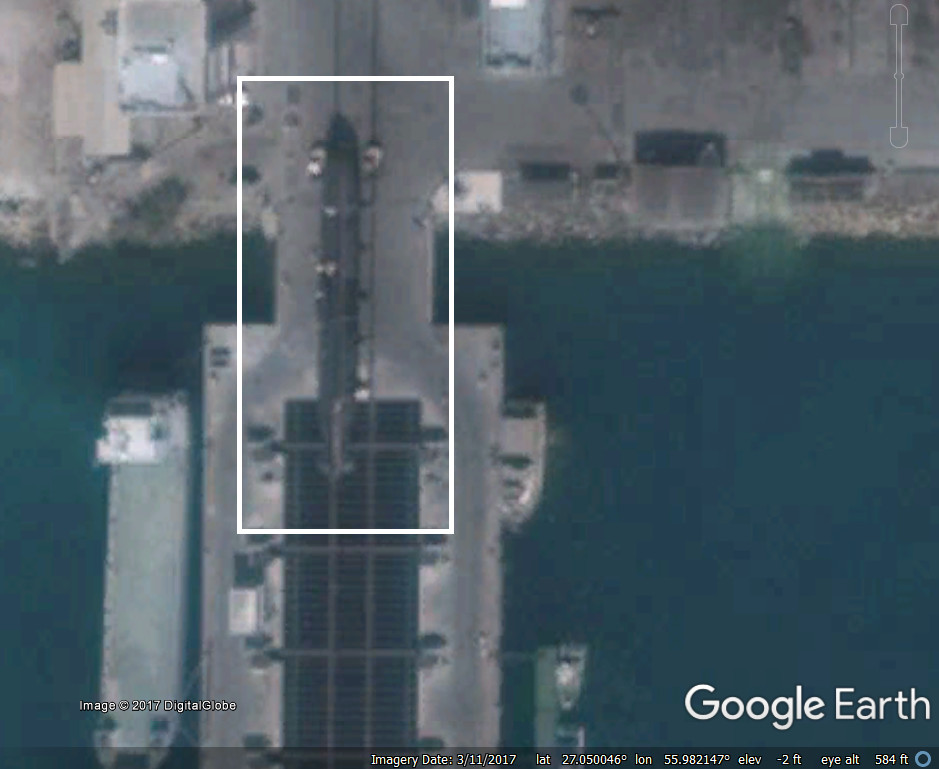

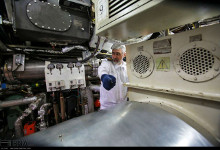
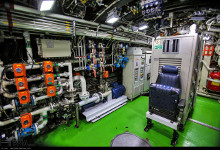

*Photographs by Mohammad Aqa*
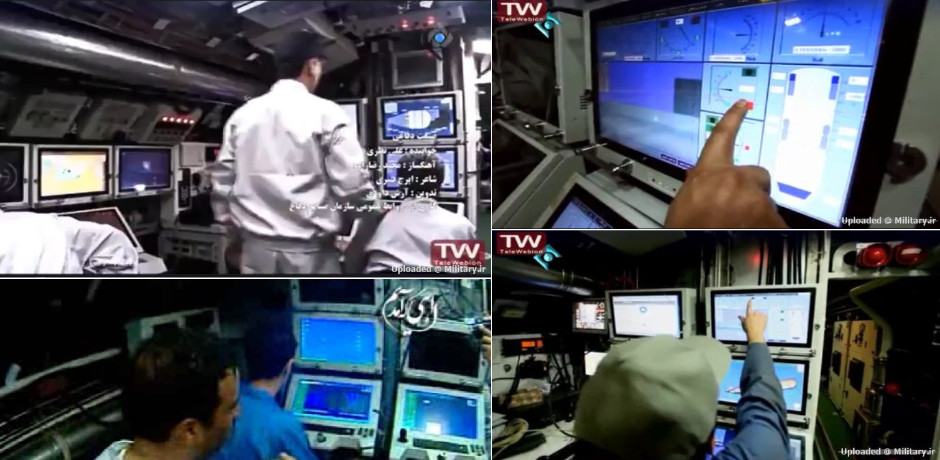
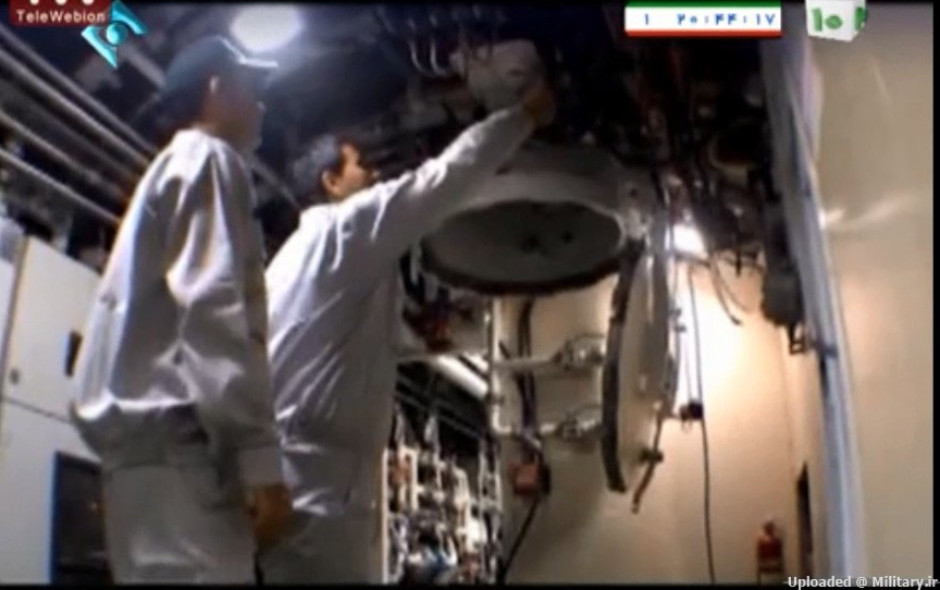
The diver lock-out trunk appears similar to the Ghadir Class, and is mounted forward of the Control Room under the sail

Get The essential guide to World Submarines
This Covert Shores Recognition Guide Covers over 80 classes of submarines including all types currently in service with World Navies.Check it out on Amazon
Selected older photos
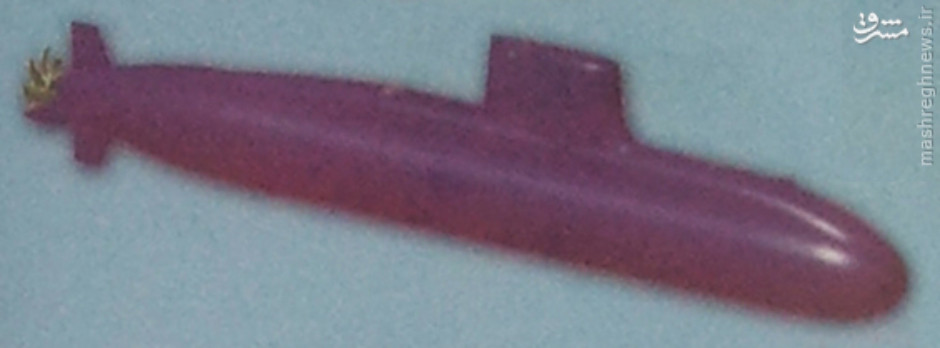
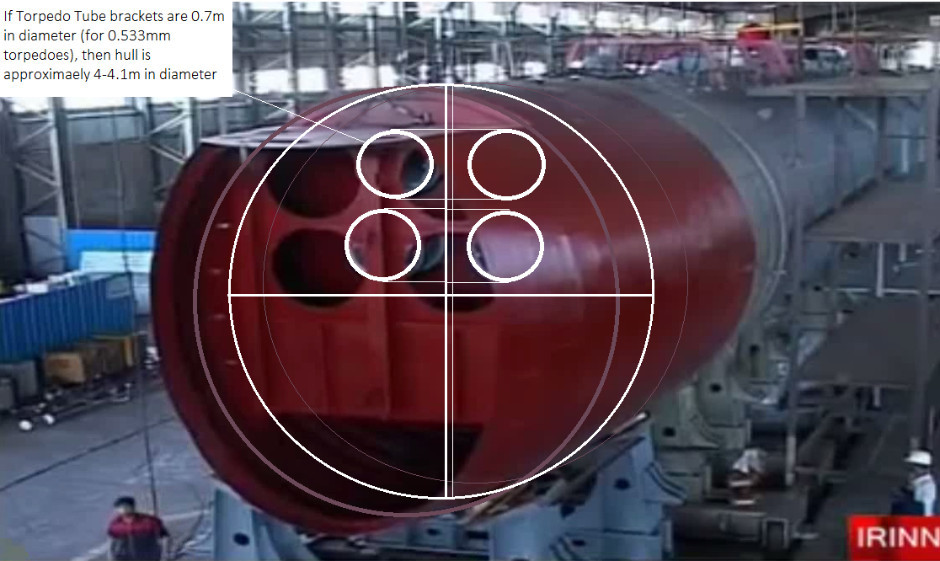

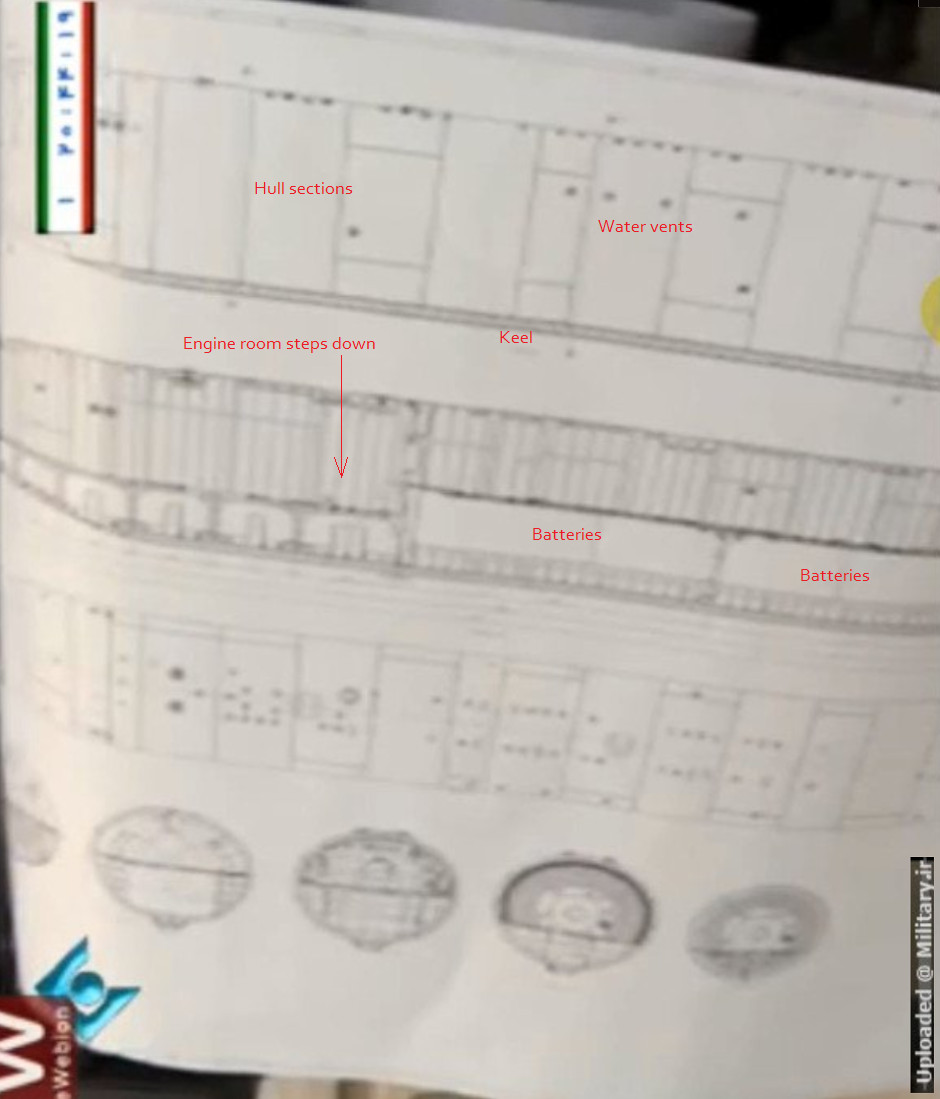
Helpfully, we got a glimpse of some construction plans. There is a lot this doesn't show, and yet a lot we can deduce:
Below the torpedo tubes is space for circular sonar arrays with asmaller set mounted above them. The sensor suite of a boat this size will be relatively limited but still much more powerful than on the smaller Ghadir. The sail is set quite far back along an unusually stepped forward casing which barely rises above the top of the hull at the bow, before rising up halfway along to allow the forward hydroplanes to be mounted. The sail has a blended leading edge similar to the latest American boats. The external ladder up the forward part of the sail, rather than a hatch, is because of the diver lock-out built into the sail like on the Ghadir.
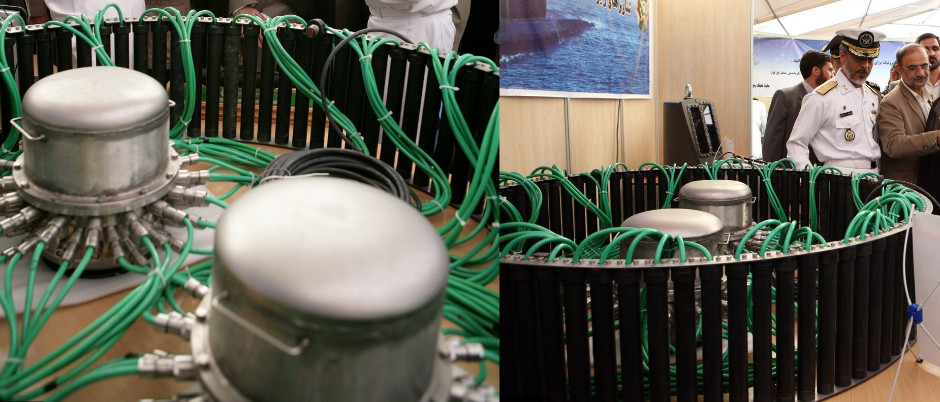
An Iranian made circular sonar array consisting of vertical staves. This layout is similar to WW2 and 1950s Soviet designs.
Related articles (Full index of popular Covert Shores articles)

 Iranian Nahang Class midget sub
Iranian Nahang Class midget sub

 Iranian XLUUV
Iranian XLUUV

 North Korean Modified-Romeo Class ballistic missile submarine
North Korean Modified-Romeo Class ballistic missile submarine

 Chinese Sailless Submarine
Chinese Sailless Submarine

 INS Arihant, Indian SSBN and .2
INS Arihant, Indian SSBN and .2

 History of Israeli subs
History of Israeli subs

 North Korean SSBN program - Sinpo Class
North Korean SSBN program - Sinpo Class


 Taedong-B 'Kajami' ('Zulfikar') submersible boat
Taedong-B 'Kajami' ('Zulfikar') submersible boat

 Al-Sabehat 15 Swimmer Delivery Vehicle and related development
Al-Sabehat 15 Swimmer Delivery Vehicle and related development

 World war One Type UC-1 U-boat w/Cutaway
World war One Type UC-1 U-boat w/Cutaway


 Type-212 AIP submarine w/Cutaway
Type-212 AIP submarine w/Cutaway

 Type-XXIXH stealth U-Boat. w/Cutaway
Type-XXIXH stealth U-Boat. w/Cutaway

